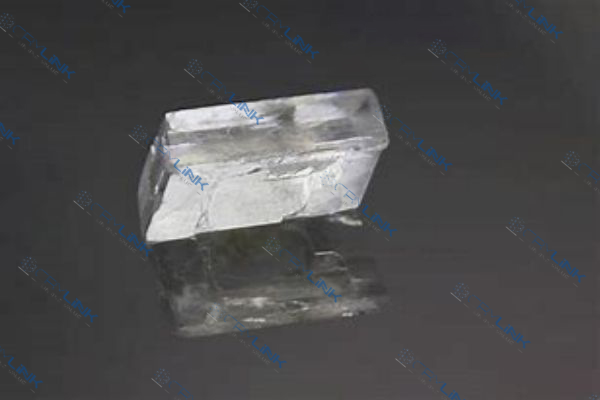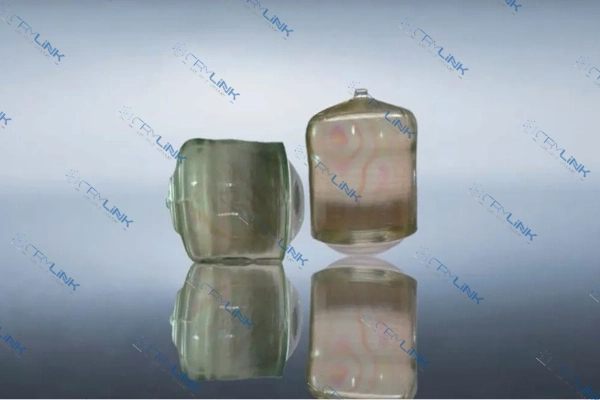Introduction
The ever-growing demand for faster and more reliable communication systems has prompted intense research into novel materials and technologies that can drive these systems. At the heart of this evolution is optical communication, which forms the backbone of modern communication networks. An indispensable component in these optical systems is the electro-optic crystal. These crystals, particularly LiNbO3 and KTP, play a pivotal role in modulating light signals, thus ensuring efficient and high-speed data transmission.

Understanding Electro-Optic Crystals
Electro-optic crystals have revolutionized the way we perceive and utilize optical signals in communication systems. These crystals are not just ordinary materials; they possess a unique characteristic that sets them apart. When subjected to an electric field, their refractive index changes. This might sound trivial, but this property has profound implications in the realm of optical communication.
At its core, the ability to manipulate the refractive index of a material gives us direct control over the phase and amplitude of light signals that traverse through these crystals. Imagine having a stream of light, representing data, flowing through a crystal.
By adjusting the electric field applied to the crystal, we can modulate this light in real-time, effectively converting electronic signals into optical ones. This modulation is the heartbeat of optical communication systems, allowing for the transmission of vast amounts of data over long distances at incredible speeds.
Among the extensive family of electro-optic crystals, two members have garnered significant attention for their superior properties: LiNbO3 and KTP.
LiNbO3, or Lithium Niobate, is a crystal that has been celebrated for its remarkable electro-optic coefficient. This coefficient essentially measures how effectively a material can change its refractive index in response to an electric field. A higher coefficient means a more pronounced change, and this is where LiNbO3 shines. Its ability to exhibit significant refractive index changes with minimal electric fields makes it an ideal candidate for a plethora of optical applications.
Its broad transparency range further augments its utility, making it suitable for a diverse range of wavelengths. This versatility of LiNbO3 has led to its widespread use in various domains of optical technology. Whether it’s in waveguides, where light signals are channeled, or in modulators, where these signals are tweaked for transmission, or even in frequency doublers, which generate light at double the frequency of incoming light, LiNbO3 has proven to be indispensable.

On the other hand, KTP, or Potassium Titanium Phosphate, brings a different set of strengths to the table. Its high damage threshold means it can handle intense light signals without undergoing degradation or damage. This resilience is crucial in systems where high-power light signals are the norm. Moreover, its phase-matching capabilities are broad, which means it can effectively work with a wide range of light signal frequencies.
While it’s a champion in the realm of electro-optic modulation, its talents don’t end there. KTP is also renowned for its prowess in second harmonic generation, a process where two photons combine to produce a new photon with double the frequency. Additionally, it’s employed in parametric processes, where one photon is split into two, each with lower energy.
In essence, the world of optical communication owes a great deal to these electro-optic crystals. They are the unsung heroes, working behind the scenes, ensuring that our insatiable thirst for data and faster communication speeds is quenched.
As we move into an era of even more data-intensive tasks, from augmented reality to real-time global collaboration, the role of these crystals will only become more pronounced. They truly bridge the gap between our electronic aspirations and optical realities.

Electro-Optic Modulation: Bridging the Optical and Electronic Domains
Optical communication systems, forming the backbone of our modern digital age, have an intricate dance of conversions at their core. These systems are tasked with the monumental job of transmitting vast amounts of data at breakneck speeds. To achieve this, they often rely on light, an entity that can travel vast distances with minimal loss and can carry tremendous amounts of information.
But our devices, from computers to mobile phones, inherently work with electronic signals. So, how do we bridge the gap between these electronic devices and the world of optical communication? The answer lies in modulation, and more specifically, electro-optic modulation.
Electro-optic modulation is a marvel of modern engineering. At its heart, it’s about controlling light with electricity. The primary agents responsible for this control are the electro-optic crystals. These aren’t your everyday crystals; they possess a fascinating ability.
When you apply an electric field across them, their very nature, characterized by their refractive index, changes. The refractive index determines how much a particular medium can bend light. By changing this refractive index, we can directly influence the light’s phase and amplitude, which are vital parameters for carrying information.
Imagine a stream of electronic data, like a song or a video, that needs to be sent across the internet. This data, in its electronic form, first encounters an electro-optic modulator. Inside this modulator, the electro-optic crystal awaits. As the electronic data modulates the electric field across the crystal, the refractive index of the crystal dances in tandem.
This dance, in turn, modulates the light passing through the crystal, embedding our song or video into the light itself. This light, now carrying our data, is ready to be transmitted across vast distances, only to be converted back into an electronic signal at its destination.
It’s a seamless process, but one that’s fundamental to our digital age. Every time we stream a video, make an online call, or even send a simple text, we’re relying on these electro-optic modulators and the incredible crystals within them. They work silently in the background, bridging the worlds of electronics and optics, ensuring that our data gets to where it needs to go, in the blink of an eye.

Advantages of Electro-Optic Modulation
The world of optical communication has witnessed monumental advancements in the past few decades, and at the forefront of these innovations is the electro-optic modulation technique. This technique, hinging on the prowess of electro-optic modulators, offers a plethora of advantages that make it a preferred choice for modern communication systems.
First and foremost is the incredible speed at which these modulators operate. With the capacity to function at frequencies soaring into the gigahertz range, they usher in a new era of high-speed data transmission. In an age where milliseconds can make a difference, be it in high-frequency trading or real-time multiplayer gaming, this speed is invaluable. The ability to modulate light signals at such rapid frequencies ensures that data packets are transmitted swiftly, allowing for seamless communication, streaming, and data transfer.
Another standout feature of electro-optic modulation is its remarkable efficiency. The magic lies in the intimate interaction between the applied electric field and the crystal lattice of the electro-optic material. This direct engagement ensures that the modulation process is not only swift but also highly efficient. There’s minimal energy loss during the modulation, ensuring that the transmitted optical signals retain their strength and clarity over long distances. In practical terms, this means that data can travel vast stretches without significant degradation, reducing the need for frequent repeaters or amplifiers.
Lastly, the modulation depth achieved with electro-optic modulators is truly commendable. Thanks to the impressive electro-optic coefficients of crystals like LiNbO3 and KTP, these modulators can achieve deep modulation. This depth translates to clear signal differentiation, which is crucial for maintaining data integrity. When signals are modulated deeply, the chances of them getting muddled or misinterpreted at the receiving end are significantly reduced. This ensures that the transmitted data, whether it’s a crucial business document or a heartwarming video call, is received in its pristine form, free from errors or distortions.
In essence, electro-optic modulation, with its trifecta of speed, efficiency, and modulation depth, stands as a beacon of modern optical communication, driving the data revolution and connecting the world like never before.

The Future of Electro-Optic Crystals in Communication Systems
With the relentless pursuit of faster, more efficient communication systems, the role of electro-optic crystals is only set to expand. Innovations in crystal growth, doping techniques, and integration with other optical components promise a future where the gap between the optical and electronic domains is bridged seamlessly.
Conclusion
The prominence of electro-optic crystals in optical communication systems cannot be overstated. These crystals, especially the likes of LiNbO3 and KTP, are instrumental in ensuring the efficient and high-speed modulation of optical signals. Their ability to bridge the gap between the electronic and optical domains forms the cornerstone of modern communication networks, promising a future of seamless, high-speed data transmission.
Frequently Asked Questions
1. What is the primary function of electro-optic crystals in optical communication?
Electro-optic crystals are used to modulate light signals, converting electronic data into optical signals suitable for transmission.
2. Why are LiNbO3 and KTP considered pivotal in optical communication systems?
LiNbO3 and KTP are favored due to their high electro-optic coefficients, broad transparency ranges, and other unique properties, making them ideal for various optical applications.
3. How does an electro-optic modulator work?
An electro-optic modulator leverages the change in refractive index of electro-optic crystals in response to an applied electric field to modulate the phase and amplitude of light signals.
4. What are the advantages of using electro-optic crystals for modulation over other methods?
Electro-optic crystals offer high-speed modulation, efficient signal conversion with minimal loss, and deep modulation depth, ensuring clear signal differentiation.
5. Are there other applications of electro-optic crystals besides modulation in communication systems?
Yes, electro-optic crystals like KTP are also used in second harmonic generation and parametric processes in various optical systems.







